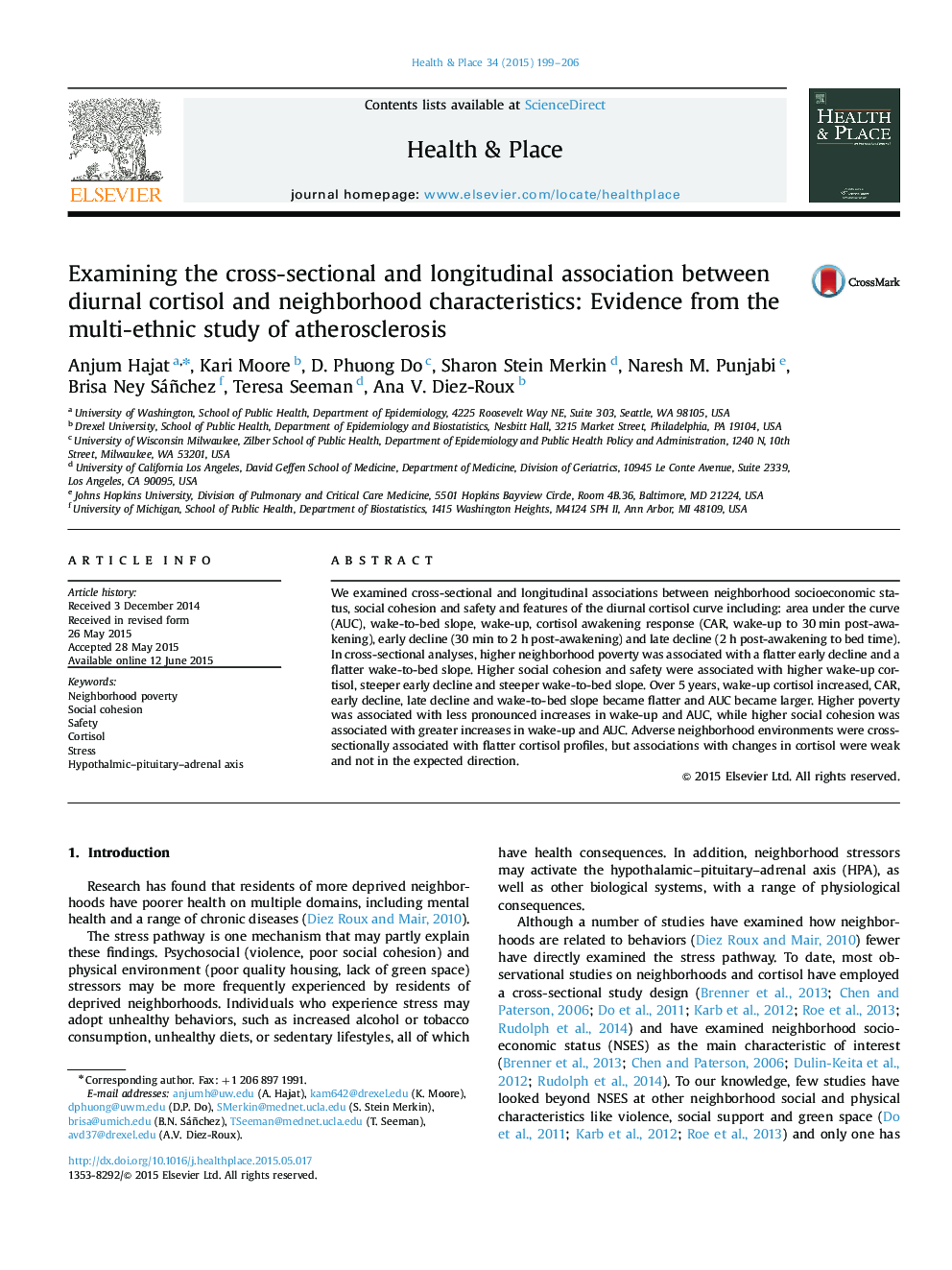| Article ID | Journal | Published Year | Pages | File Type |
|---|---|---|---|---|
| 7458030 | Health & Place | 2015 | 8 Pages |
Abstract
We examined cross-sectional and longitudinal associations between neighborhood socioeconomic status, social cohesion and safety and features of the diurnal cortisol curve including: area under the curve (AUC), wake-to-bed slope, wake-up, cortisol awakening response (CAR, wake-up to 30Â min post-awakening), early decline (30Â min to 2Â h post-awakening) and late decline (2Â h post-awakening to bed time). In cross-sectional analyses, higher neighborhood poverty was associated with a flatter early decline and a flatter wake-to-bed slope. Higher social cohesion and safety were associated with higher wake-up cortisol, steeper early decline and steeper wake-to-bed slope. Over 5 years, wake-up cortisol increased, CAR, early decline, late decline and wake-to-bed slope became flatter and AUC became larger. Higher poverty was associated with less pronounced increases in wake-up and AUC, while higher social cohesion was associated with greater increases in wake-up and AUC. Adverse neighborhood environments were cross-sectionally associated with flatter cortisol profiles, but associations with changes in cortisol were weak and not in the expected direction.
Related Topics
Health Sciences
Medicine and Dentistry
Public Health and Health Policy
Authors
Anjum Hajat, Kari Moore, D. Phuong Do, Sharon Stein Merkin, Naresh M. Punjabi, Brisa Ney Sáñchez, Teresa Seeman, Ana V. Diez-Roux,
